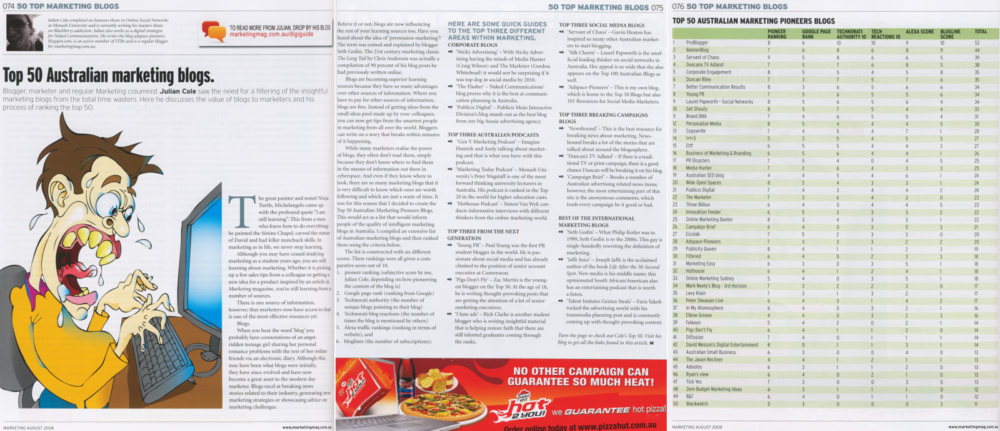Not quite absolutely nothing.
I recently subscribed to B&T Magazine and found interesting the “advice column”. Unfortunately I didn’t get a chance to respond to the magazine in time, so I thought I’d do it here instead.
Here was their question…
One of my clients, who is marketing director at a big name brand, wants to hold a competition inviting the public to come up with an advertisement to launch a new product to the market. I think user generated campaigns hardly ever end well, and given that the brand’s demographic is 14 year old males, I’m convinced this will go down badly. How do I tell my client I think it’s a terrible idea?
And my response…
UGC is not about free content. If you ran a high involvement campaign, you might receive 1 out of 100 entries that you would find useful. In this case it would be a commercial that could pass as a legitimate idea in the boardroom. The other 99 would not. Chances are, majority of those would be legally unusable mash ups or reflect your brand in a negative light.
It takes a lot of pressure and heat to make a diamond. Yet the best diamond is the one you find accidentally and for free, usually nothing to do with a campaign of yours.
Now on a very different, yet similar, tangent, there has been a lot of talk lately around the blogosphere regarding social objects. These sharing devices provide value to consumers through social currency.
A UGC campaign should look to build social objects with consumers. Much like Scott Drummond’s afro or David Gillespie’s hat this becomes something people will talk about. Even better, this is something the consumer will actively spread onto friends and family, encouraging people to talk about it.
But what differs this from any other social object is the strong brand connection, and like Julian Cole’s necklace, the brand is a part of its creation. So while the brand is weaved into the object itself, it is also part of its story, creating a higher level of social currency.
UGC is about building social objects that have a strong connection to the brand and as a result provide value to consumers with social currency. With this social currency, consumers can build their own relationships stemmed from a relationship with the brand. Above all, UGC is not about free content.

